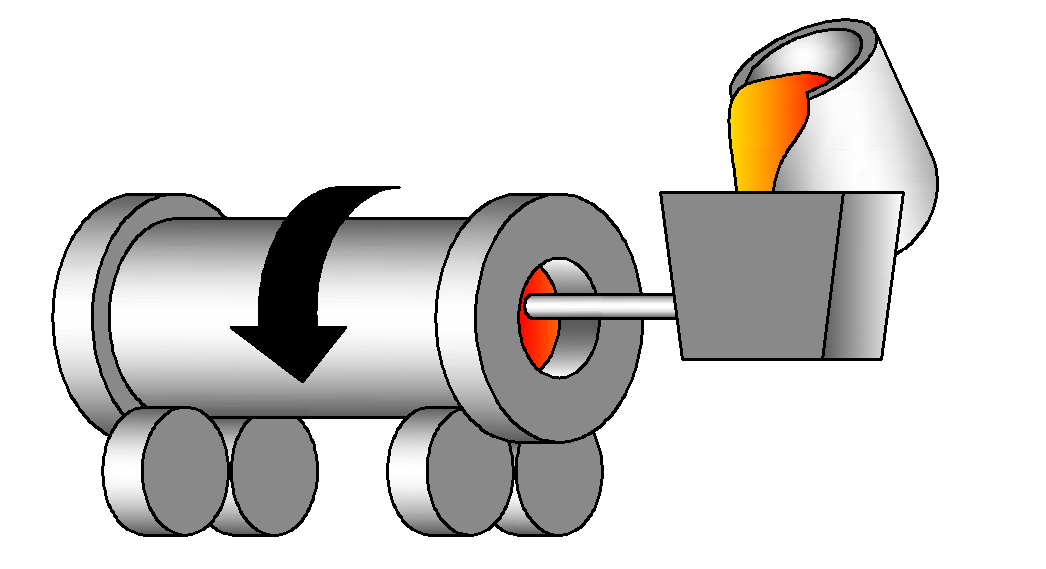Centrifugal casting is a metal casting process in which molten metal is poured into a rotating mold and solidifies under the influence of centrifugal force. The centrifugal force helps to distribute the molten metal evenly and eliminate any air pockets or voids that might be present, resulting in a uniform and dense casting. There are two main types of centrifugal casting: true centrifugal casting and semi-centrifugal casting.

True Centrifugal Casting
In true centrifugal casting, the mold is rotated about a horizontal axis, causing the molten metal to move radially outward from the center of the mold. The centrifugal force causes the metal to form a solid outer layer, which continues to build up as the mold rotates. The inner portion of the casting remains molten, flowing towards the center of the mold where it solidifies last. The result is a cast part with a cylindrical shape and a hollow center, making it ideal for producing tubes, pipes, and cylindrical components.
Semi-Centrifugal Casting
Semi-centrifugal casting is similar to true centrifugal casting, but the mold is rotated about a vertical axis. Semi-centrifugal casting is often used to produce components that have complex shapes, such as gears and impellers. The process is particularly useful for producing high-quality parts with consistent dimensions and uniform wall thickness. The molds for semi-centrifugal casting can be expendable or permanent, and cores may be used.

Advantages of Centrifugal Casting
Centrifugal casting offers several advantages in the casting process. One of the key benefits is the elimination of impurities and porosity within the cast. During the centrifugal casting process, the molten metal is spun rapidly, which causes lighter impurities and gas to be drawn to the center of the casting. This results in a casting with a higher density, improved mechanical properties, and fewer defects compared to traditional casting methods. The reduction of impurities and porosity also contributes to a smoother surface finish and reduces the need for post-casting processing and cleaning. By using centrifugal casting, manufacturers can produce high-quality castings with fewer defects and improved mechanical properties, leading to lower production costs and increased productivity. Additionally, centrifugal casting can produce castings with consistent wall thickness, which is particularly useful in producing hollow parts with uniform thickness.
